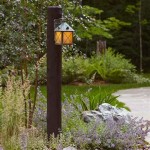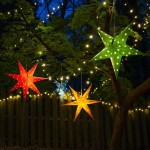Outdoor Light Photocell: The Automatic Switch for Your Outdoor Lighting
Outdoor lighting plays a crucial role in enhancing security, aesthetics, and functionality around a home or property. But manually switching lights on and off every evening can be inconvenient and energy-intensive. This is where outdoor light photocells come into play, offering a smart and efficient solution for automating your outdoor lighting system.
An outdoor light photocell, also known as a light sensor or dusk-to-dawn sensor, is a device that uses light intensity to control the operation of lighting fixtures. It senses the ambient light levels and automatically turns the lights on when it gets dark and off when it gets light again. This simple yet effective technology eliminates the need for manual intervention, ensuring your outdoor lights are always on when needed and off when not.
How Outdoor Light Photocells Work
The operation of an outdoor light photocell relies on a photoresistor, a component that changes its electrical resistance depending on the amount of light falling on it. When the light level drops below a certain threshold, the photoresistor's resistance increases, triggering a relay to close and switch the lights on. Conversely, when the light level rises above the threshold, the photoresistor's resistance decreases, opening the relay and turning the lights off.
Photocells are typically installed in an exposed location, facing the sky, to ensure they receive accurate readings of ambient light levels. They come in various designs, including stand-alone units, integrated fixtures, and even wireless options that connect to your home's automation system. The specific features and functionality of a photocell will vary depending on the model and manufacturer.
Benefits of Using Outdoor Light Photocells
Outdoor light photocells offer several advantages over manually controlled outdoor lighting systems:
1. Energy Efficiency
By automatically turning lights on only when necessary, photocells significantly reduce energy consumption compared to lights left on all night. This translates into lower electricity bills and a reduced environmental footprint. With the rising cost of energy, energy-efficient solutions like photocells are becoming increasingly attractive.
2. Enhanced Security
Outdoor lighting is a crucial element of home security, deterring intruders and enhancing visibility around the property. Photocells ensure lights are automatically activated when darkness falls, providing a constant deterrent and enhancing the security of your home or business.
3. Convenience and Comfort
Photocells eliminate the need to manually switch lights on and off every evening, providing a convenient and hassle-free experience. You can enjoy the benefits of well-lit outdoor spaces without having to worry about turning lights on and off manually. This is especially beneficial for busy homeowners who appreciate any time-saving solutions.
4. Extended Fixture Lifespan
Photocells protect your outdoor lighting fixtures from premature wear and tear by preventing them from being left on unnecessarily. This extends the lifespan of your lights, reducing the need for frequent replacements and associated costs.
5. Improved Aesthetics
Outdoor lighting can enhance the curb appeal of your property, creating a welcoming and attractive ambiance. Photocells ensure your lights operate automatically, making your outdoor spaces look their best without any effort on your part. This is especially beneficial for homeowners who want to create a stylish and inviting outdoor space.
Choosing the Right Photocell
When selecting an outdoor light photocell, it's crucial to consider several factors:
1. Light Sensitivity
The light sensitivity of a photocell determines the light level at which it will activate and deactivate the lights. Choose a photocell with a sensitivity suitable for the intended application. For example, a photocell with high sensitivity may be suitable for a driveway or walkway where bright light is needed even during twilight hours.
2. Installation Type
Photocells are available in various installation types, including stand-alone units, integrated fixtures, and wireless options. Choose the installation type that best suits your existing lighting setup and space constraints.
3. Compatibility
Ensure the photocell you select is compatible with your existing lighting fixtures and wiring. Some photocells may require specific wattage ratings or other compatibility considerations, so it is essential to check before purchasing.
4. Features and Functionality
Photocells offer a range of additional features and functionalities, such as adjustable timers, motion sensor capabilities, and remote control options. Choose a photocell that meets your specific needs and preferences.
Outdoor light photocells are a valuable investment for any homeowner or business owner who wants to enhance security, improve energy efficiency, and automate their outdoor lighting system. By understanding the benefits and factors involved in choosing the right photocell, you can enjoy the convenience and benefits of automated outdoor lighting for years to come.

Holme Black Up Down Outdoor Photocell Wall Light Litecraft

Litecraft Perry Black Outdoor Lantern Wall Light With Photocell Sensor Diy At B Q

Wall Mounted Photocell Sensor Outdoor Lighting

Litecraft Kenn Black Up And Down Outdoor Wall Light With Photocell Sensor Diy At B Q

Holme Black Outdoor Wall Light With Photocell Litecraft

240v Dusk To Dawn Sensor External Photocell Unit Lumena Lights

Design House Swivel Mount 120 Volt Outdoor Photocell With Dusk To Dawn Sensor 588087 The Home Depot

Grant Outdoor Up Down Led Photocell Wall Light Steel Bhs

Design House 120 Volt Outdoor Internal Mount Photocell With Dusk To Dawn Sensor 588095 The Home Depot

Helo Outdoor Up Down Wall Light With Photocell Litecraft
Related Posts







